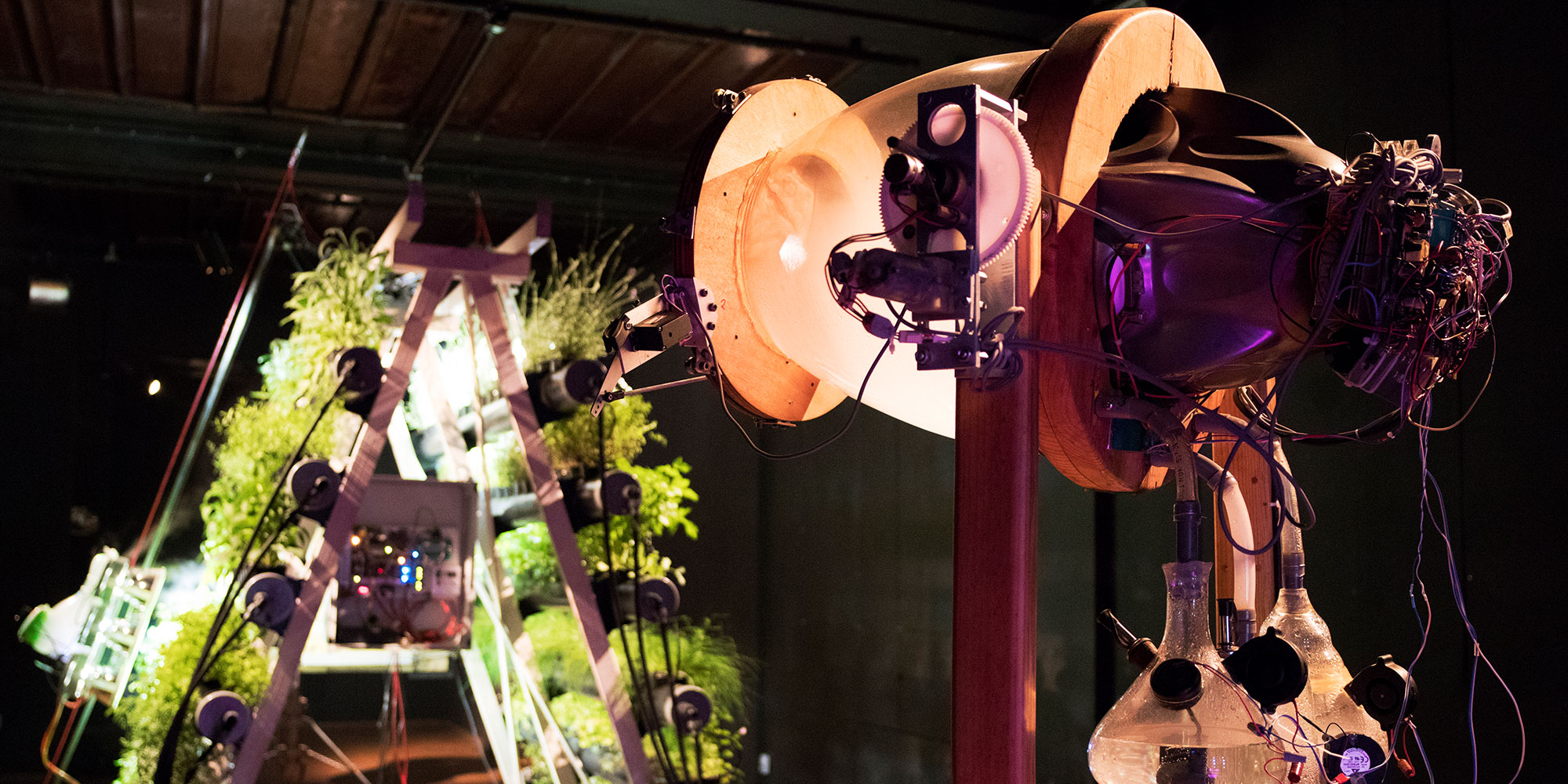‘Let us finish what we started’. This is how the UN introduces its first Sustainable Development Goal – to end poverty in all forms and dimensions by 2030. The 17 Sustainable Development Goals and their 169 targets have been described as a sprawling, misconceived mess of grandiose intentions.
The title of the development agenda itself – ‘Transforming our World’ – oozes utopian ambition. It was adopted by 193 nations in 2015. Five years later and with ten years left, how do you think our world will transform?
Will there be no poverty and zero hunger across the world in ten years? Is this planet to be populated in ten years by billions of healthy and educated humans? Is comfortability or autonomy more important to well-being? Can you be comfortably autonomus?
These are the questions scientists were asked who applied to an open call to collaborate with artists in the STUDITOPIA residency program. Over the course of almost two years, artists and scientists will undertake a creative journey together that addresses these questions and explores sustainable development across Europe through the converging views of art and science.
The artists and scientists will kick-off their collaboration at the Ars Electronica festival with a Creative Question Challenge (CQC). The CQC is a new brainstorming format in which speakers explore and present creative questions in a 30-minute dialogue.
Video
Video Artwork
Project Credits / Acknowledgements
This project is presented in the framework of STUDIOTOPIA and co-funded by the Creative Europe Programme of the European Union.
Biographies
Christiaan Zwanikken (NL)
Christiaan Zwanikken (NL) has received international recognition through his kinetic and mechanical sculptures, sound works, performative and responsive installations. Using a variety of sculptural media, robotics, biology, micro-controllers, and sound— his work is both an artistic and technological experiment in which innovation and invention play an important role.
The substantive basis of the recent work is based on the assumption that human activities causing climate change and the destruction of biodiversity are symptoms of a greater cognitive and phenomenological problem. As technological artifacts proliferate and biodiversity as a living scaffold of life-learning is not comprehended, the role of the sensitive experience of the environment in the development of cognitive and cultural abilities declines. Cut off from the elements of the living world from which human intelligence emerged and on which it had long relied, people are now deprived of a basic intellectual resource. In such circumstances, there is no experiential, conceptual, or representational basis for appreciating the debt which the human mind owes to other forms of life on Earth. Without empathy for biodiversity, it becomes practically impossible to achieve a stable psychological foundation for the kind of sustained ecological commitment needed to solve contemporary environmental crises.
DM Hoyt (US)
DM Hoyt (“Hoyt”) is a creative pragmatist with a methodical mind and a love for brainstorming. Hoyt is also a practicing mechanical and structural engineer who specializes in leveraging the high-performance properties of advanced composite materials to increase fuel efficiency of airplanes and to enable ever-larger wind turbines that increase the amount of renewable energy in the global energy mix.
For the past 20 years he has led a small team of engineers at the company he founded, NSE Composites, and has served as principal investigator and project manager on a wide range of applied R&D projects for customers in the aerospace and wind energy sectors. Hoyt has also devoted much of his career to aircraft structural certification and related safety initiatives through collaborative industry-regulatory working groups focused on ensuring structural reliability, and thus public safety, as airplanes transition from traditional aluminum construction to modern-day carbon fiber composite wings and fuselages.
Hoyt has collaborated with artists, architects, dancers, sculptors and other creatives on a range of projects including large-scale light and sound installations. Hoyt also once rode his motorcycle from his hometown of Seattle to the Darién Jungle in Panama to raise awareness for a rare genetic skin disease that runs in his family and to raise money for research to find its cure. Hoyt has traveled to over 40 countries and has lived in Amsterdam since 2018.
Emmanuel Grimaud (FR)
Emmanuel Grimaud (FR) is an anthropologist whose research explores the borders of human perception, technology, communication and measurement. In Les Plans-Limites d’Expérience (2018), he draws inspiration from the Uncanny Valley theory developed by the Japanese roboticist Masahiro Mori, to re-center anthropological methodology around critical zones of undetectability or imperceptibility, what he calls ‘perceptive dead angles’. Based on the principle that anthropology is an ignored experimental science, Grimaud argues for the invention of other modes of study and the development of radical and provocative experimental protocols. with Zaven he designed a robotized interface of the god Ganesh, Bappa 1.0, which allows anyone to put themselves in place of a god and hold a conversation (Ganesh Yourself, Arte/La Lucarne, 2016). His research often results in films such as Le Sosie de Gandhi (2001), Cosmic City (2008), Les Rois de Kwaang (2209) on the beetle matches in Thailand, Eau Trouble (2011) on fish fights or Black Hole ( 2019) about hypnosis and ghost hunting in Calcutta.


